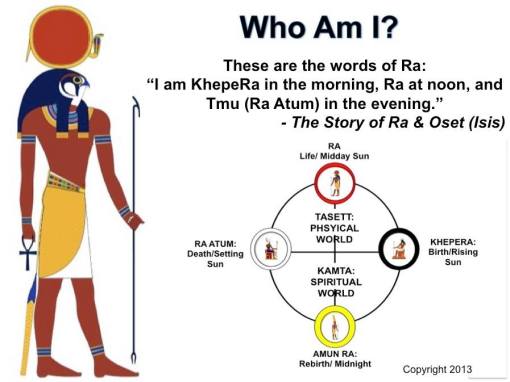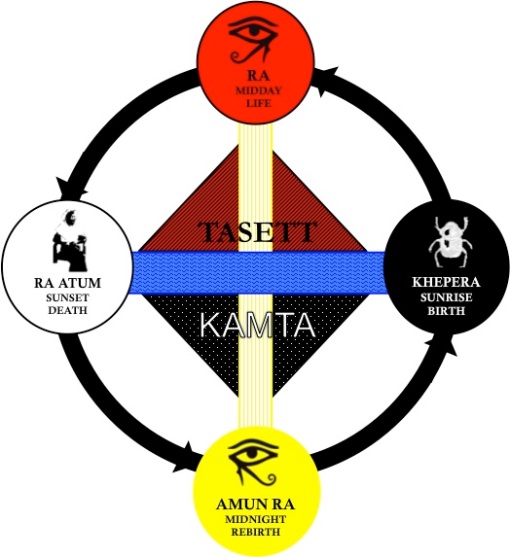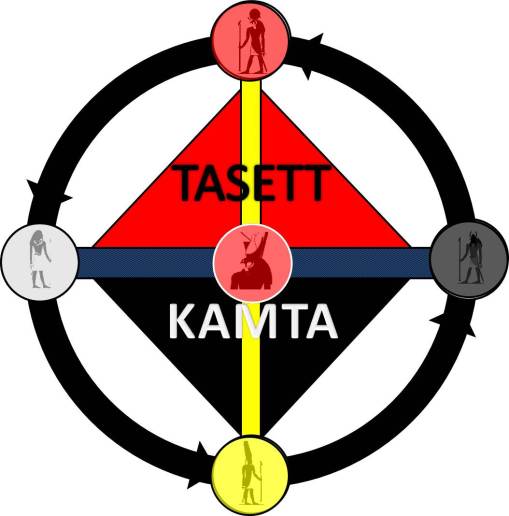Hetepu (Peace) Family.
You know, since the conception and creation of the Maa Aankh, I have found this simple yet complex diagram to be remarkably beautiful and powerful in its ability to guide me to more profound truths. First, the Maa Aankh cosmogram is based upon the surviving Bantu-Kongo philosophies that were brought to North America via the slave trade and syncretized with Pentecostal Christianity, which has been combined with Kamitic (Ancient Egyptian) and traditional Kongo philosophy in order to restore one back to his or her glory.
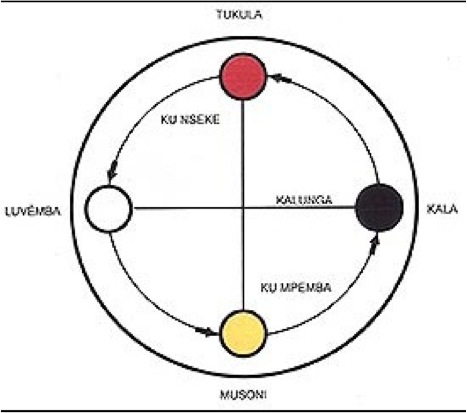
You see, I learned contrary to popular belief, that early African Americans did not lose all of their cultural practices as initially thought. It appears this way only because a substantial amount of African American culture (language, beliefs, foods, etc.) has been absorbed by the greater and dominant American society.
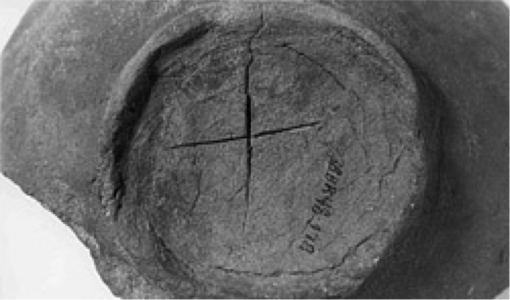
Archaeological artifacts and historical documentation reveals that a substantial amount of African American culture survived the enslavement period primarily because of the Bantu-Kongo cosmogram known as the Dikenga, Yowa or Kongo Cross.
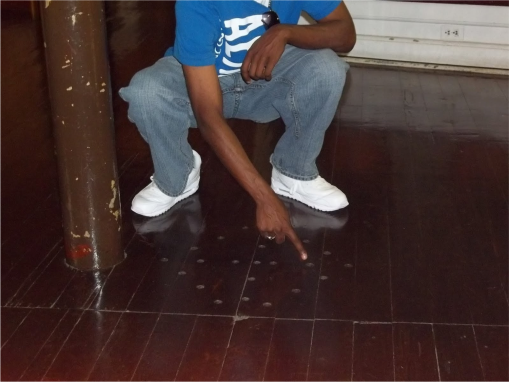
This is the reason generally speaking African Americans unconsciously continue to engage in similar cultural practice that have been found throughout the Afro-diaspora (especially in regards to honoring the dead), despite not having any knowledge of other African and African derived traditions.
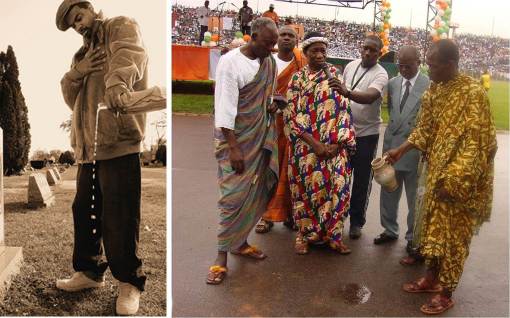
This is because what I discovered was that early African Americans did not lose their culture. Instead what early African Americans loss was their cultural philosophy and theology, which is the indigenous, traditional or ancestral explanation that explains the purpose behind the cultural practice. To compensate for this loss and combat the cruelty of slavery, early African Americans adopted and borrowed concepts from Protestant Christianity. Today however, the concepts of Christianity have outlived their purpose which explains why the number of churches and temples within in our steadily declining communities, is steadily rising, but none of the problems that exist are being solved. (Hence, “Everyone believes they are called to be a preacher or some other religious leader.” In truth they are just ego-tripping.) As a result, this has inspired many (myself included) to search for an unadulterated cultural philosophy.
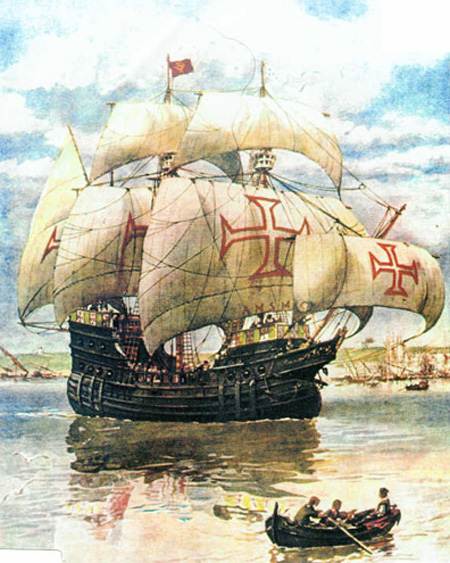
Unfortunately, when I tried to research the traditional philosophy of the Bantu-Kongo, I discovered that because the Kongo- Angolan region was the first to encounter the Europeans. They were also the most devastated by the Transaltantic Slave trade, imperialism and civil discord, which meant that most of the traditional Bantu-Kongo philosophies was lost (especially with the passing of the great Kongo scholar Dr. Kimbwandende Kia Bunseki Fu-Kiau).
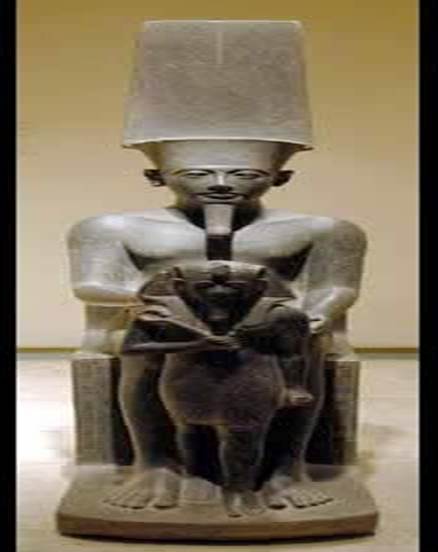
Thankfully, the Kamitic (Ancient Egyptian) Amun Ra tradition had similar beliefs as the Bantu-Kongo.
So when I combined the Kamitic beliefs with the existing Kongo Cross information that survived in North America; through channeling it led to the creation of the Maa Aankh.
The Maa Aankh like most sacred cosmograms or medicine wheels found around the world, can be interpreted a number of ways depending upon how you use it. The following are some of the most common interpretations:
From a personal perspective, since the Kamitic word “Maa” meaning balance, order, righteousness and truth, and “Aankh” means life or to swear an oath. The Maa Aankh can be translated as “To swear an oath to live truth” or “Righteous Living.” From a group or tribal perspective the Maa Aankh could be interpreted to mean the “Order of Life” or “Holistic Living.”
These different interpretations are all based upon the basic understanding of the Maa Aankh, which consists of land above and the land below symbolizing Earth surrounded by four discs. These discs symbolize the four moments of the sun described in KiKongo as – Sunrise (Kala – Black), Midday (Tukula – Red), Sunset (Luvemba – White) and Midnight (Musoni – Yellow, when the sun is believed to be shinning on the other side). The four solar discs also symbolize man and woman’s soul and correspond exactly to the Kamitic Amun Ra divinities birth – Khepera (Creative Ra or Creative Power), life – Ra (Authoritative Ra or Overseeing Power), death – Ra Atum (Complete Ra or simply the Power of Revolution) and rebirth – Amun Ra (Hidden Ra or Hidden Power).
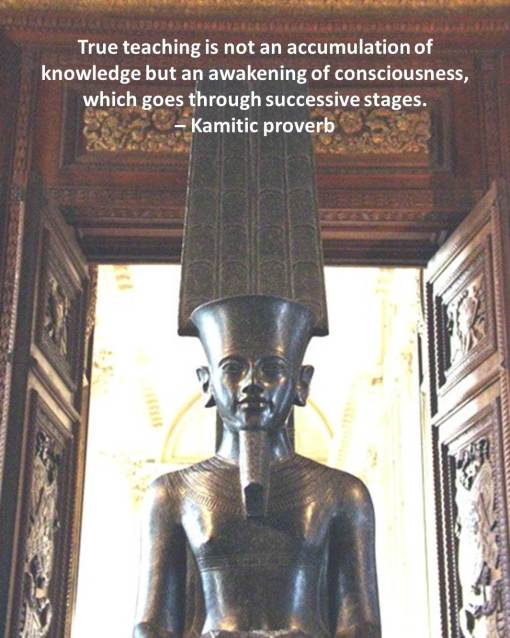
Thereby indicating that the Kamitic gods are not gods at all but are abstract concepts and attributes of God describing the evolution of one’s soul and consciousness.
Copyright 2013 Derric Moore
From a metaphorical perspective the Maa Aankh provides deeper insight into the Kamitic Story of Osar when the land above is symbolized as TASETT – the Red Lands or Lower Kamit ruled by Set, and the land below is symbolized as KAMTA – the Black Lands or Upper Kamit ruled by Osar (Asar, Ausar, Osiris in Greek). According to legend Osar came into power when humanity was at its lowest, but he managed to uplift his people by teaching them Maa. All loved Osar but his youngest brother Set had grown increasingly jealous of Osar and eventually killed him. Thanks to the loving devotion of Oset (Aset, Auset, Isis in Greek), Osar’s beloved wife, Hru (Hrw, Heru or Horus in Greek) the heir of Osar was born, who after surviving many attempts on his life as a child. Hru grew to adulthood but after being visited in his dream by his deceased father Osar who instructed him to avenge his wrongful death. Hru challenged his evil uncle for the throne. Finally after numerous battles and litigation, Hru finally defeated his uncle and united the kingdom. This is why he rests in the center of the Maa Aankh, wearing both crowns, indicating that everything extends and everything returns.
Again metaphorically speaking, the Story of Osar can be interpreted a number of ways. Consequently, some see the story as a metaphorical retelling of historical events, while some others may interpret it as a prophecy. In either case, because the Story is a great story, no interpretation is incorrect because each interpretation communicates a deeper truth about the fight between good and evil.
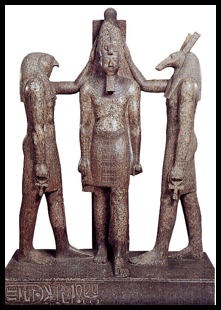
However, metaphysically speaking which means going beyond the physical. When TASETT is used to symbolize our subconscious self or the division of our being that functions on autopilot in our daily visible life, while KAMTA (since black also refers to invisible) is is used to symbolize our superconscious self or the intuitive part of our being, and Hru is conscious self. The Story of Osar due to the Maa Aankh takes on a more profound meaning. It indicates that since Osar is the ruler of KAMTA or our intuitive superconscious memories (ancestors, spirit guides, angels, spiritual energies, hidden forces, etc.) and Set is the ruler of TASETT or our habitual, personal subconscious memories (all the conditionings, habits and learnings we have acquired in this present life time, etc.). In other words, it is the conscious use of our subconscious that leads to our divine awakening.

The Story of Osar therefore becomes an allegory about the constant daily fight we all must undergo between our higher, superconscious, divine self and our lower, subconscious, ego self. Meaning our salvation or spirituality is all about learning how to surrender control to our higher spirit, higher self or Osar, instead of being controlled by our lower spirit, lower self, ego or Set.
The Maa Aankh from this perspective is a visual reminder what all the great sages of humanity have told us since the time of immemorial, that the Kingdom of God is found within. In other words, peace, happiness, prosperity and power are all ethereal concepts, which mean they can’t be found externally. These attributes can only be found within by looking beyond the physical. In other words, the only one who can save you is yourself and as soon you realize this, is when you will be free.
Hope that helps.
Hetep (Peace)

